
So, you got yourself an off-road truck and you want to get off the pavement and onto the trails. You’ve heard about airing down and various tire pressures but you might be unsure of the how, the what and the why. Look no further, you’re at the right place.
Why should you adjust your tire pressures for off-road driving? There are quite a few reasons to do so. Handling, comfort, traction are just a few of them. In this article, we are going to dive deep into the basics behind tire pressures. Hopefully, by the end, you feel more comfortable with the topic and are ready to hit the trails.
Your tires are your main point of contact on the road or trail and are the first part to absorb the shock from traveling on uneven terrain. How your tires behave greatly affects your overall ride and the amount of stress that gets translated to the truck. And of course, and possibly most importantly, your ability to gain good traction and avoid getting stuck.
There are positives and negatives to airing down. This article should serve as a great beginner’s guide to tire pressures.
Let’s get right into it!
Table Of Contents
The PROs
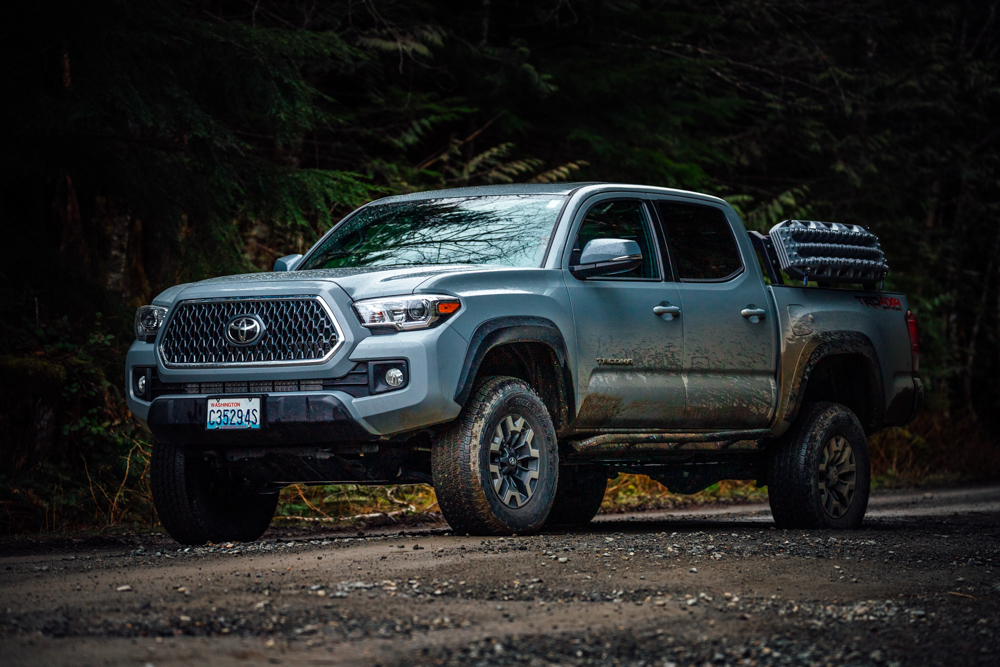
There are many benefits when it comes to airing down your tires.
Increased Traction
The most obvious and most widely know is the increase in tire traction. When you lower your tire pressure, you, in turn, increase the tire’s footprint and in doing so, have more contact and grip with the ground.
Comfort
Comfort is also a huge factor – at least it is for most of us. A low tire PSI allows for more flex in your tires, this not only helps to dampen vibration and uneven terrain, making your ride a lot smoother, it also helps to prevent punctures. Punctures can easily happen at the wrong tire pressure if you drive over a sharp rock or piece of wood. Now, I’m not saying that all rocks and sticks will puncture your tire but a lower PSI is a great deterrent to a ruptured tire.
Less Stress on Drivetrain
The list of positives doesn’t stop there. Now that you have less vibration and less force being transmitted through the truck, you’re now putting less stress on your vehicle as a whole. The suspension is working hard when you’re off the pavement. Vibrations also put added stress on other vehicle components.
So any time you can let your tires absorb more of the bumps in the road, you’ll find that your truck takes less of a beating. A quality suspension is one thing, but most people who have never been on the trail would be shocked at the in-cabin difference between 40 PSI and 15 PSI while driving down a rough road. When running full PSI you will feel almost every rock and bump in the trail. With aired down tires around 15-18 PSI – your tires float over rocks and small debris in the terrain. Sometimes you hear the term “better flotation” off-road, and that is commonly referenced when talking about airing down tires and low PSI.
More Flotation = Better Performance
But let’s get back to the extra grip you get from airing down. Different driving surfaces have distinctive characteristics. Snow, sand, rock, dirt, mud. Various tire pressures handle these surfaces differently. Any ground that’s soft, like snow, mud or sand, will require lower tire pressures to increase the footprint of your tires and help with weight distribution, and increase your traction. Think of it like putting on snowshoes on your truck. This is where tire flotation really shines. The flotation on aired down tires can tackle difficult terrain by expanding the tire’s contact patch and “floating” on top of the surface.
What’s the one thing that will guarantee you get stuck in these types of conditions? Yep, you guessed it. Wheelspin. Spinning your wheels on soft surfaces will only end up digging a hole for your truck to sink into. Getting the extra traction and flotation from airing down will help reduce wheel spin, and help keep your truck floating over obstacles.
Finally, and importantly, a low tire pressure helps to ensure that you do less damage to the trail you’re traveling on. Just some food for thought.
The CONs
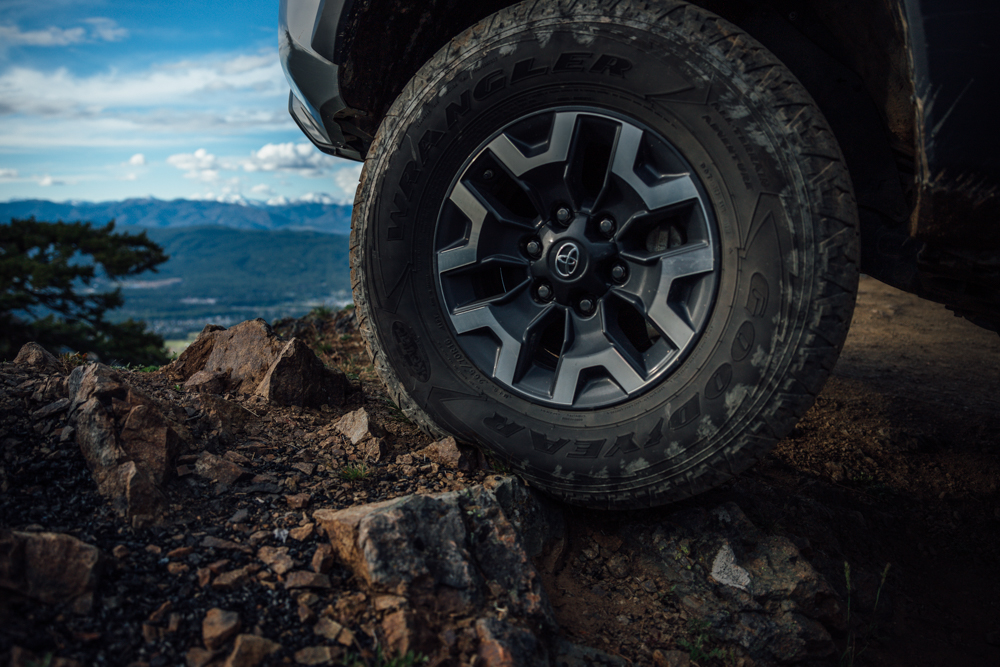
While there are many pros to airing down, here are also some potential negatives. From my standpoint, many are avoidable and they don’t outweigh the pros. Keep in mind, the more you air down, the more these will become a factor.
Breaking the Bead
By far, the biggest risk of airing down is the potential to break the bead, this means under stress, you break the seal between tire and wheel. This will force you to, if you have the knowledge/gear, reseat your wheel and tire. This is not super difficult, but it requires some know-how and practice. Your only other option is to switch over to a spare tire. The lower you go in tire pressure the more of a risk this becomes. Typically, you won’t have a very high risk if you keep your tire pressure at, or above, 15 PSI. Every tire has its own pressure ratings though and your wheels have a lot to do with this as well.
Speed and Heat
The next thing that airing down effects is speed. Running at the normal speeds you would on the street, with your tires aired down, can for one, damage the tire. The flex that gives you the extra traction you get from lower tire pressures, will cause your tire to heat up much quicker. Excess heat can degrade your tires at a faster rate. After all, tires are not designed to run with only 30%, or so, of the recommended PSI. I like to say – the lower you go, the slower you go. At speed, the rubber compounds in your tire can heat up fast. Whether you are racing through the desert or spinning your tires on rocks attempting an obstacle, more heat typically equals more/faster wear and tear.
More Control and Traction Comes At A Price
When aired down and put through their paces, tires will contact a larger surface area of the terrain thus putting more stress on all elements of the tire; the tread, lugs, sidewall, and shoulder. The more you go off-road and lower your tire pressure, more the control and traction you have, but the more abuse the tires will take.
Ground Clearance?
Lastly, you will lose some ground clearance, but nothing crazy. Just something to be aware of. The clearance gains from larger tires and a lift kit can lose around an inch but that depends on how much air you take out.
Recommended Gear
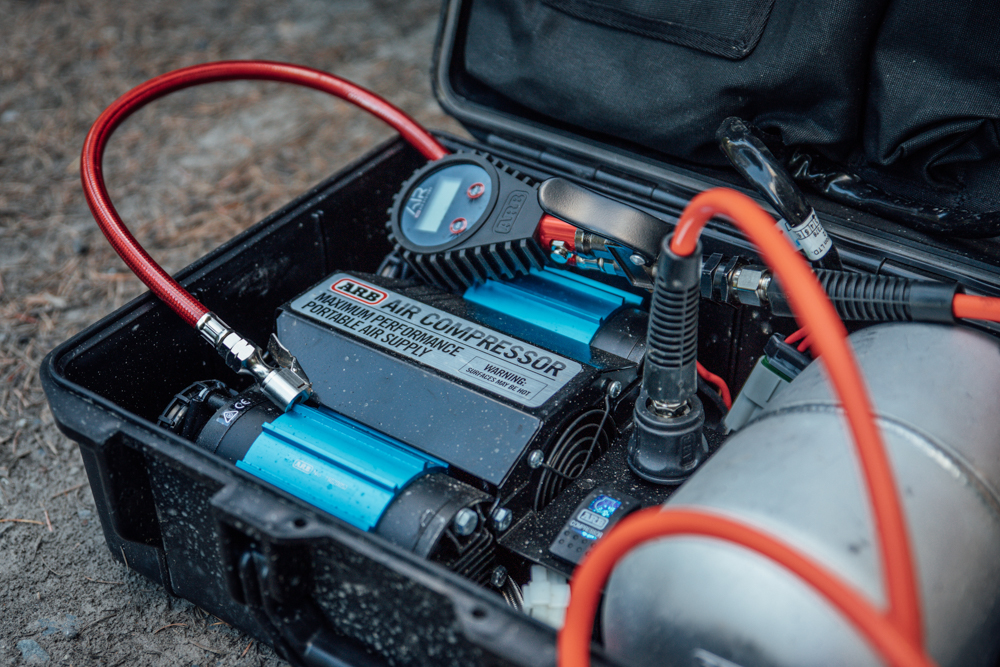
First things first. You’ll need a way to let the air out of your tires.
There are many options here. To begin, you could just use a key or a screwdriver to let out your air. It’ll work, but you’ll quickly learn how the smallest tasks can quickly eat away at the quality time spent on the trail. Most of the tire deflator options are affordable and simply put, make your life easier.
Air Deflators
Many people like the ARB E-Z deflator. It’s nice because it’s fast, and has a pressure gauge on it. On my truck, I chose to use the JT Brooks Automatic Tire Deflator PROs. The main reason for my purchase was that these deflators allow you to do all four wheels at once and they stop automatically when the tire gets to a set PSI, you can change the PSI to your desired pressure. This is definitely where I save some valuable time.
Pressure Gauges
Next up, of course, is a tire pressure gauge. It’s very important to know what PSI your tires are at. Most newer vehicles have tire pressure monitoring systems (TPMS) and will display the tire pressure for all four wheels on the dash. This is handy while you’re driving but can be a pain when you’re trying to air down and you have to keep going to the driver’s seat to see what your tire’s pressure is. Not to mention, the dash readout can be delayed in relaying actual tire pressures.
Airing Back Up
Finally, the most important thing you need is a way to air back up. The last thing you want is to have an awesome time on the trail and be stuck driving home on super low tire pressure. Driving long distances on low tire pressure could potentially cause damage to the tire, the truck, or worst of all, to you and your passengers. You don’t want to take the chance for a blowout to occur. Low tire pressures also drastically affect steering response and input as well as overall vehicle stability.
You can always hit the gas station at the end of the day, but you are never guaranteed a gas station in safe driving distance. Do yourself a favor and look into reliable portable air compressors that you can use to air up at the end of the trail.
Luckily, there are tons of options for airing back up so you don’t have to worry about driving long distances. These range from a portable air tank to onboard, and hardwired air compressors. I have the ARB dual-motor portable air compressor. I like it because it’s quick to set up, fills my tires rapidly, can run air tools, comes in a waterproof case and I didn’t have to install it into my truck.
Be on the lookout for a review on this heavy-duty compressor. ARB offers several other options that can be permanently mounted in your engine compartment or in the bed of your Tacoma. You can find these below.
Find These Products
- J.T. Brooks Automatic Pro Tire Deflators: Check Price
- ARB E-Z Deflator Rapid Air Down Kit: Check Price
- ARB Digital Tire Pressure Gauge with Braided Hose and Chuck, Inflator and Deflator: Check Price
- ARB 12V Twin Motor High-Performance Portable Air Compressor: Check Price
- High Output On-Board Air Compressor: Check Price
- Maximum Output On-Board Air Compressor: Check Price
Choosing Pressure
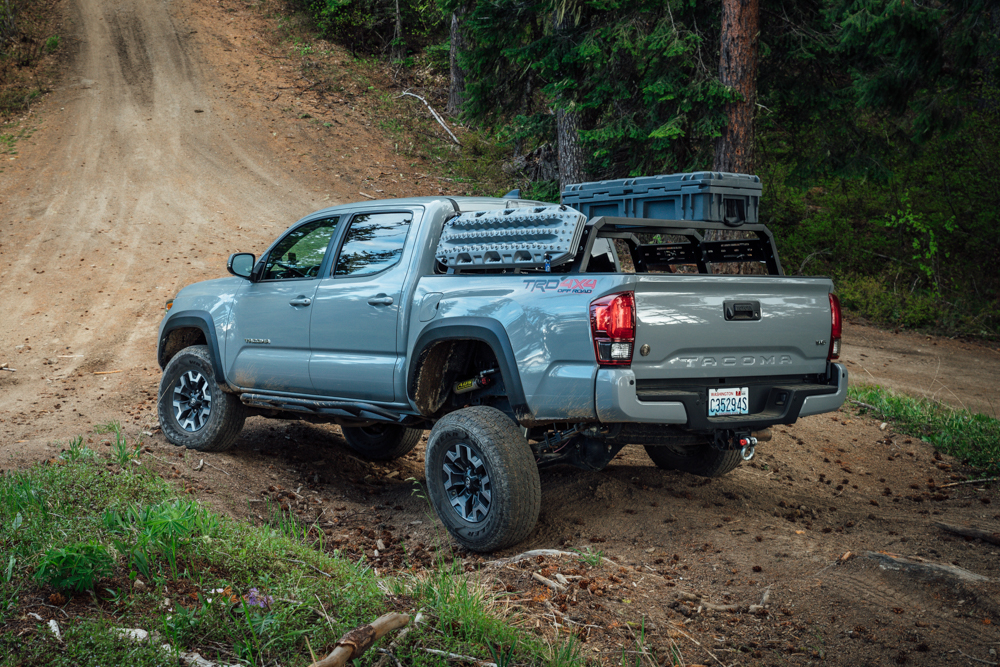
Now that we’ve gone over the benefits and the risks of airing down, let’s get to the fun stuff, specific tire pressures.
As much as I’d like to give you one PSI for all situations, I can’t. It’s a little more complex than that. There are too many factors that go into what’s best for each truck and each situation. Every rig is different, and every terrain type is different. So this is something you’ll have to decide for yourself. So here’s a list of the factors you need to consider when choosing off-road tire pressures.
The weight of your vehicle is a huge factor. Also, think about the amount of gear you have in the vehicle. Overlanding rigs get real heavy, real quick. The heavier your truck is, the more air pressure you need to support it.
Then there are your tires. Stock tires won’t be able to air down as much as an upgraded all-terrain or mud-terrain tire. I’d say a good rule of thumb for the stock wheel and tire set up on a 3rd Gen Tacoma is, don’t drop below half of your normal of the regular street tire pressure. For example, if you’re running 36 PSI for daily driving, you’ll be pretty safe at around 18-25 PSI on your stock wheels and tires. You can go down more, but you need to remember the risks if you do.
Next up, your wheels. Some wheels have more of an outer lip that grips the tire better than others, some have bead locks, and some have other features that will help keep your tire on the wheel. Some companies may not have a full bead lock, but the design was designed with maximum bead retention in mind.
Start by experimenting with different tire pressures. Drop the air in your tires down by 5 PSI increments. So if your standard street pressure is 35psi, drop to 30psi and drive down a dirt track for a bit to see how it feels. Then drop it again to 25 PSI and test. And again, to 20 PSI and retest. You’ll quickly get an idea of what feels the best for you.
After a bit of practice and experimenting, you can fine-tune your tire pressures for different conditions like sand, snow, mud, rocks, etc. I’ve put together some recommended tire pressures for different terrain. These examples are broad because of the wide range of vehicle weights, tires, wheels, and roads. I’ll also say that even the most cautious drivers can still damage their truck while running these tire pressures, so remember to use common sense.
What PSI Do I Run?
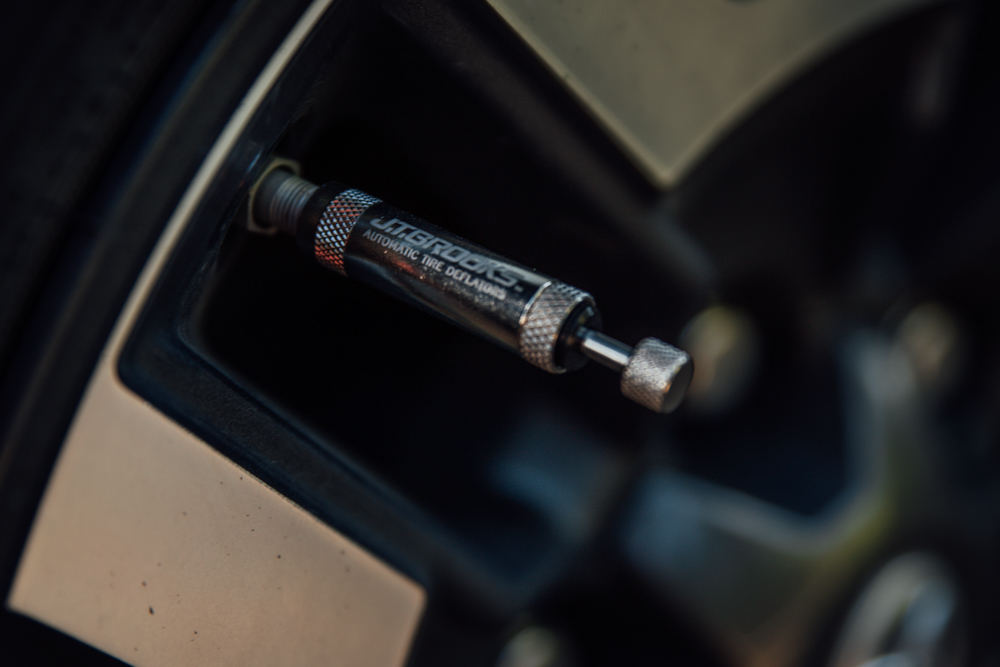
Pictured here, I have the stock wheels and tires on my 2019 TRD Off-Road.
When I hit a dirt road, I drop all four tires to 20 PSI, I like to run a few extra PSI if my bed is super loaded down for a long trip. I find this makes the effects of most washboard roads, almost disappear. This pressure has also done well for me on most surfaces and conditions.
However, snow is an exception. Last time I went up into the snow, I dropped way down to 15psi. This is on the edge of my comfort zone for my stock wheels and tires. But it’s not uncommon for people to get into the 15psi range and have no problems. You just have to be careful.
I’m about to get new wheels and tires in a few weeks – Method Race Wheels 702s, that have bead-grip features and some Nitto Ridge Grapplers. This setup should allow me to safely run 10-15 PSI without worrying about the bead.
I would say the average air down PSI for guys running 33″ – 34″ tires is around 18 PSI.
Final Thoughts
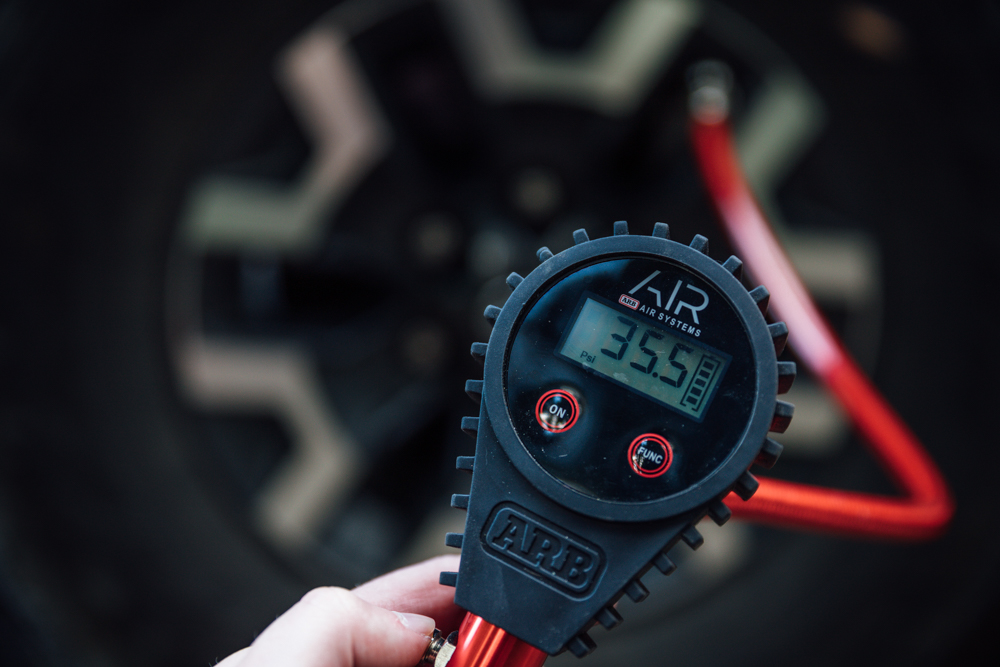
Airing down is a must for anyone who plans to take their tuck off the beaten path.
Airing down is an essential part of off-roading. If you’ve haven’t experienced it yet, once you get off the pavement, you’ll quickly realize how important running proper tire pressure is.
It will take some time and experimenting to find the tire pressures you like for your particular setup. But the time invested is well worth it.
My general advice is to take your Tacoma out and start testing how the ride is with various tire pressures. Try a particular obstacle with one tire pressure and then lower the pressure even more and run it again. You’ll quickly find out what works best for you and your rig.
Once you start airing down a few times, you will start to understand your truck, pressure, and how weight affects just about everything.


Are the method 702 the only street legal rims that work well with low tire pressure? This was good all around info thanks.
Pretty much all aftermarket wheels are street legal, you really shouldn’t have any issues there. You could run low PSI on any rim, even OEM. The rim really doesn’t make a difference. Especially for off-road. We, of course, don’t recommend any cheap wheels though.